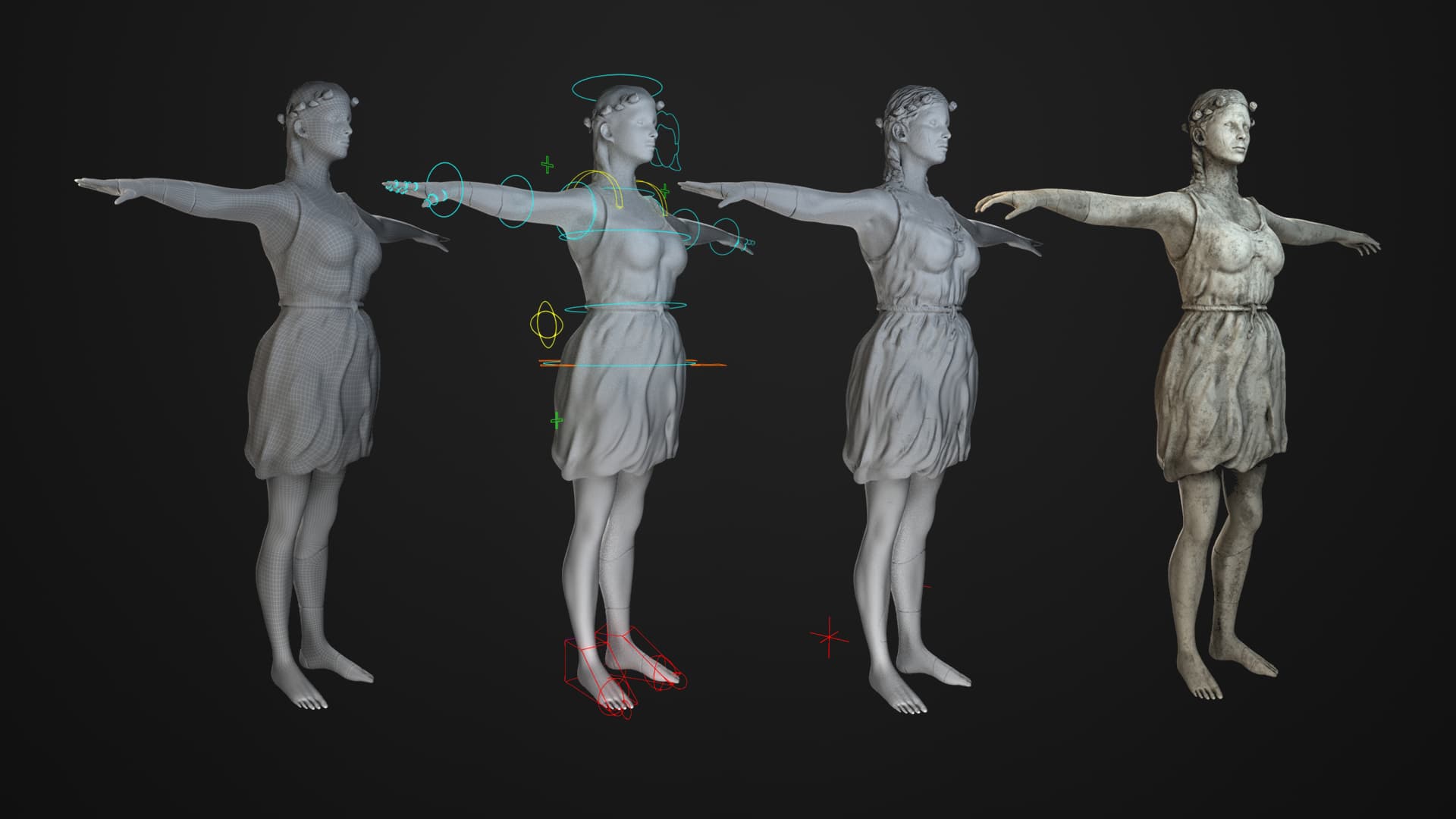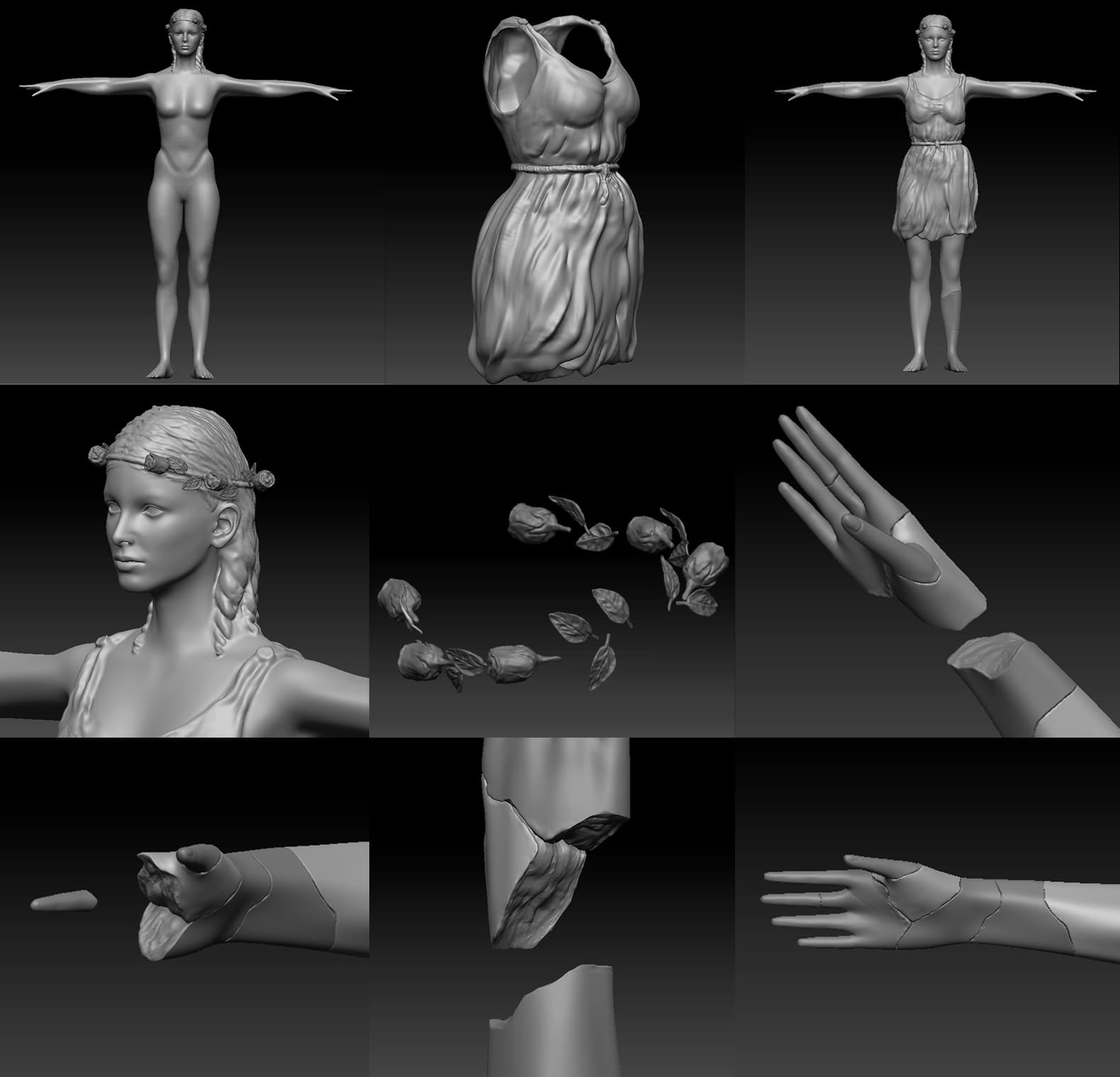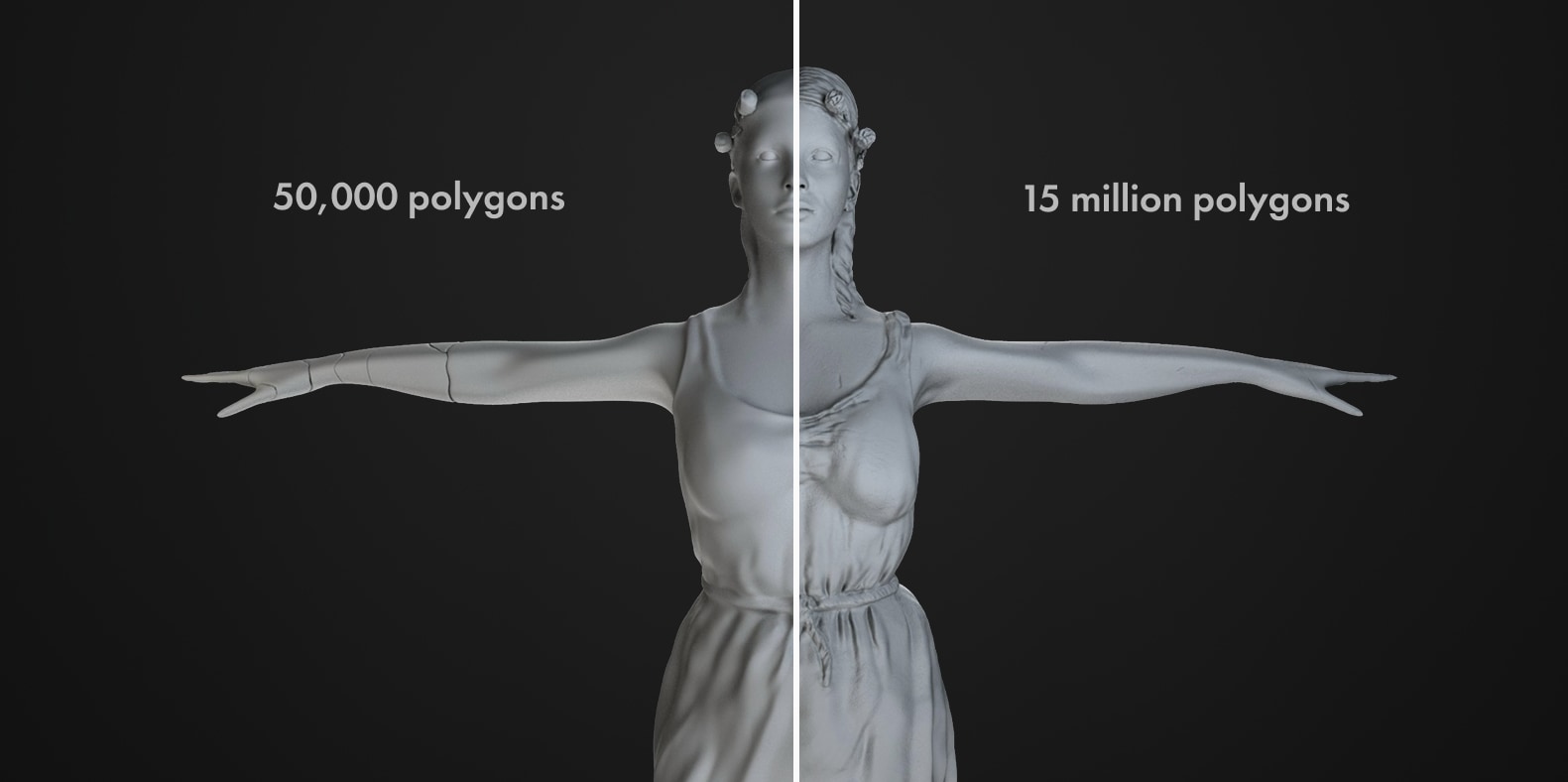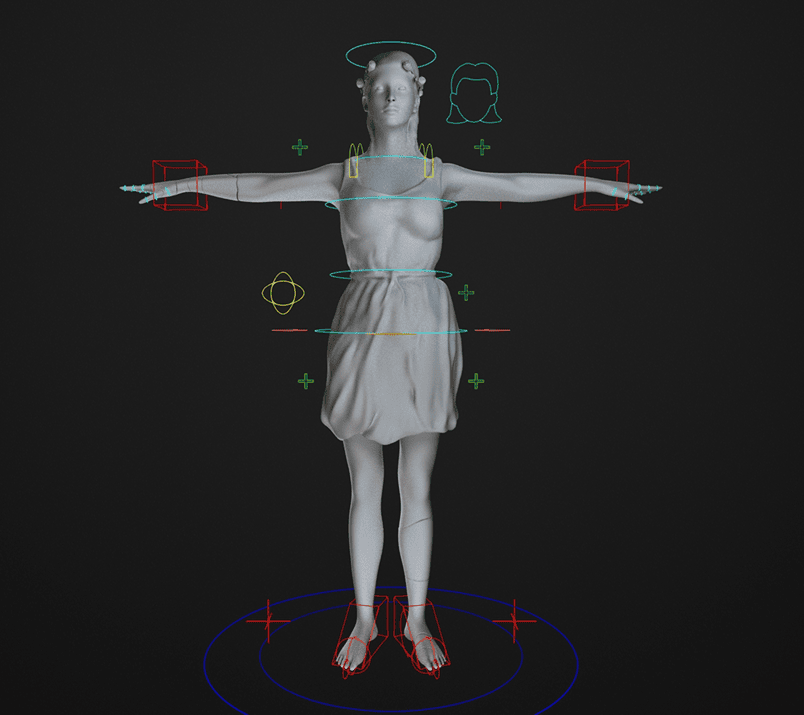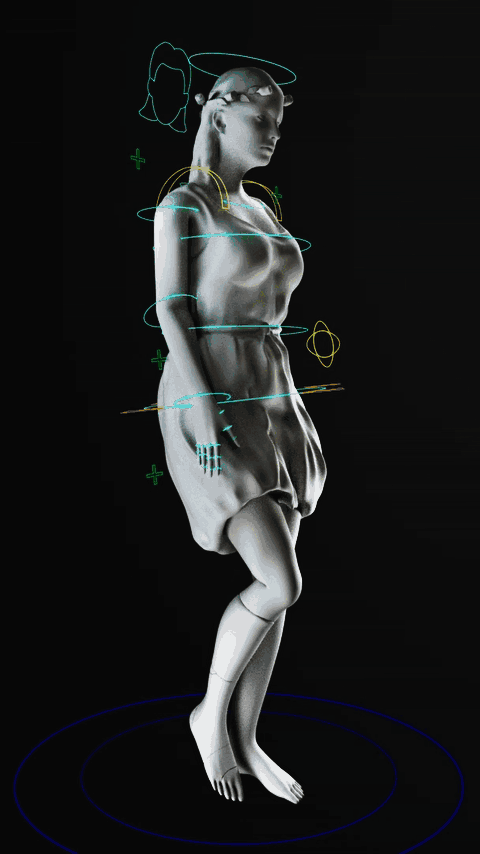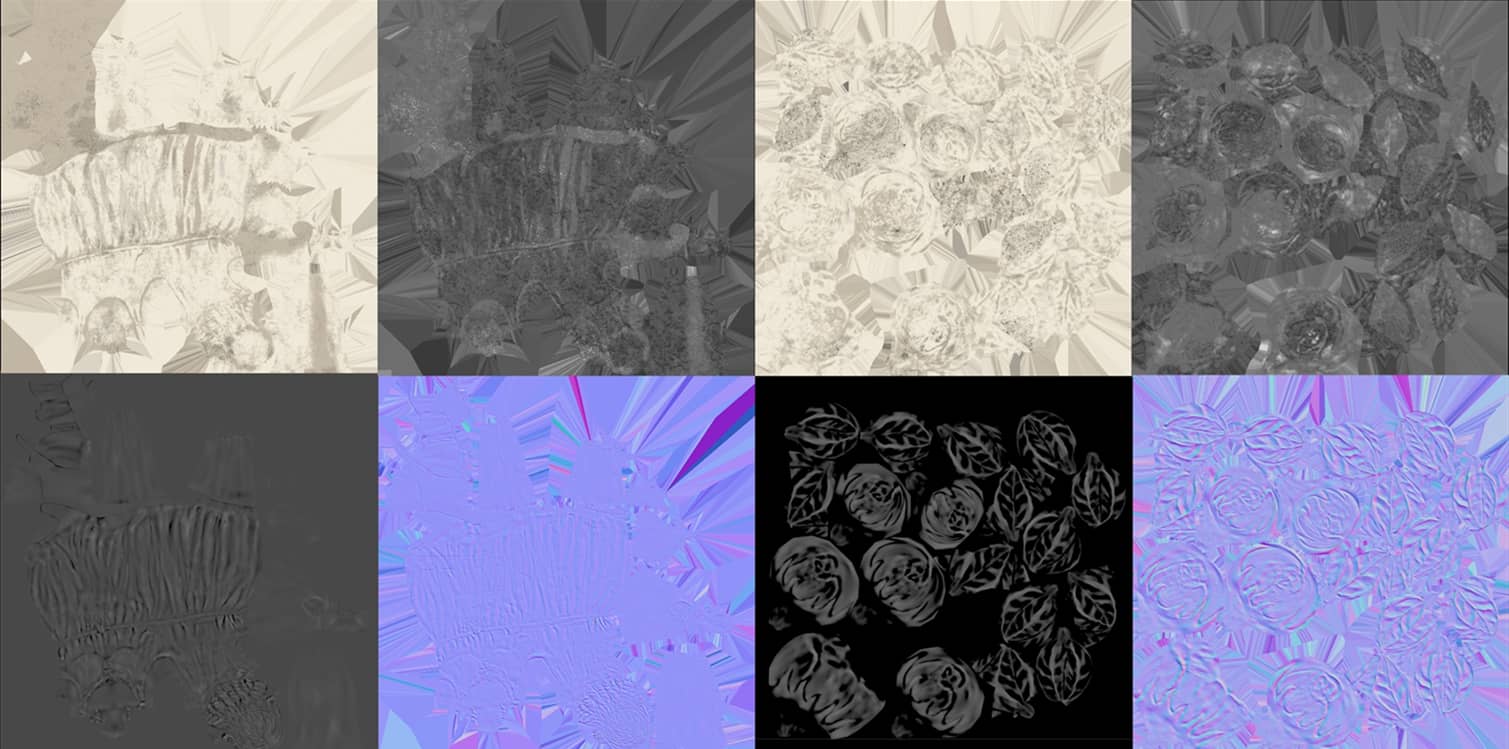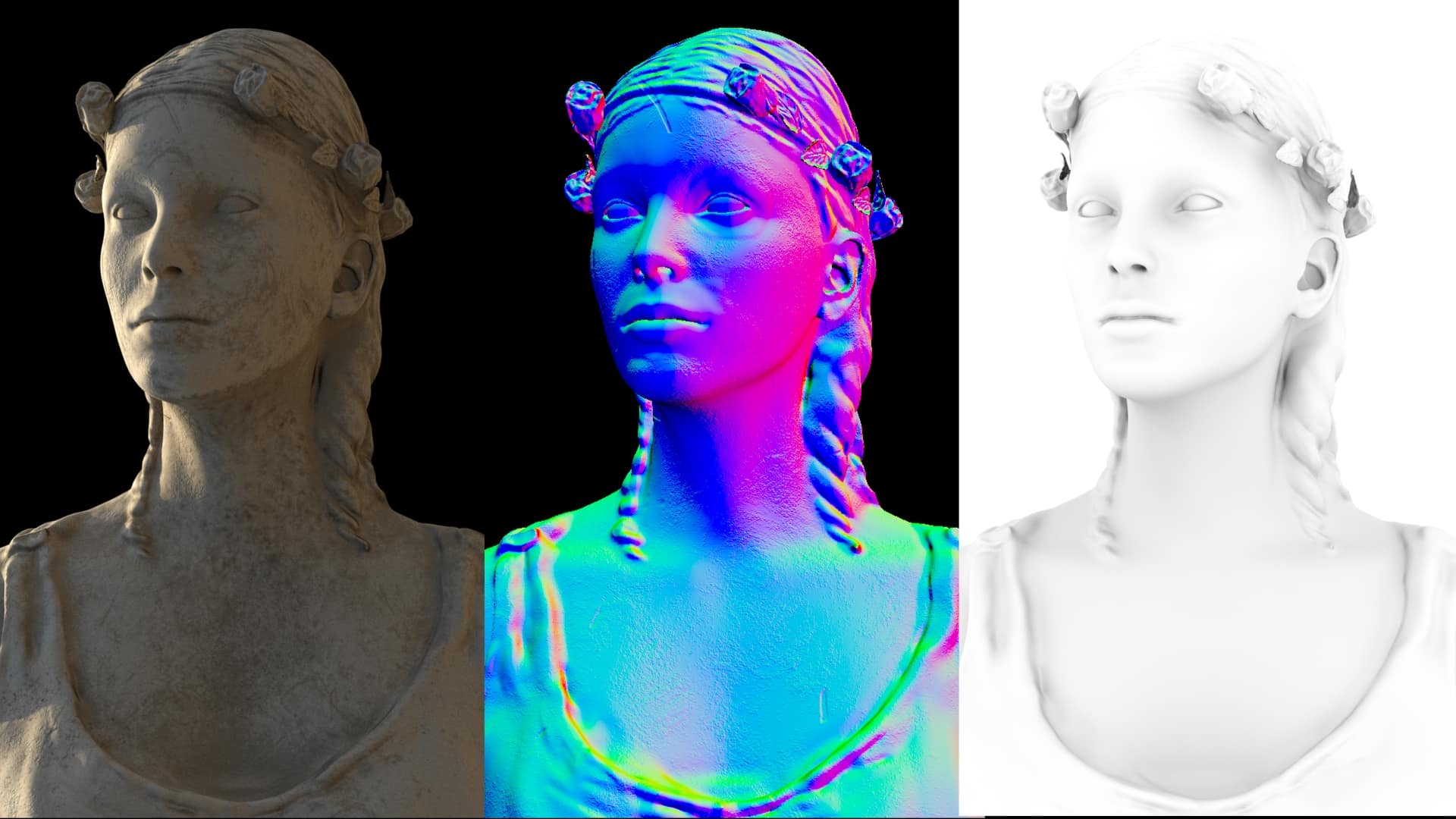Lighting and Rendering
Lighting and rendering were done in Maya using the Arnold Renderer. We exported renders into various passes: Beauty, Ambient Occlusion, Alpha, Shadows, Z-Depth, and others, to give us maximum flexibility during compositing.Thanks to these multi-channel exports, we were able to seamlessly integrate the 3D elements with the live-action footage shot at the Stadio dei Marmi. Once the VFX shots were finalized, we moved into editing and color grading, ensuring a cohesive visual tone across the entire short film.

